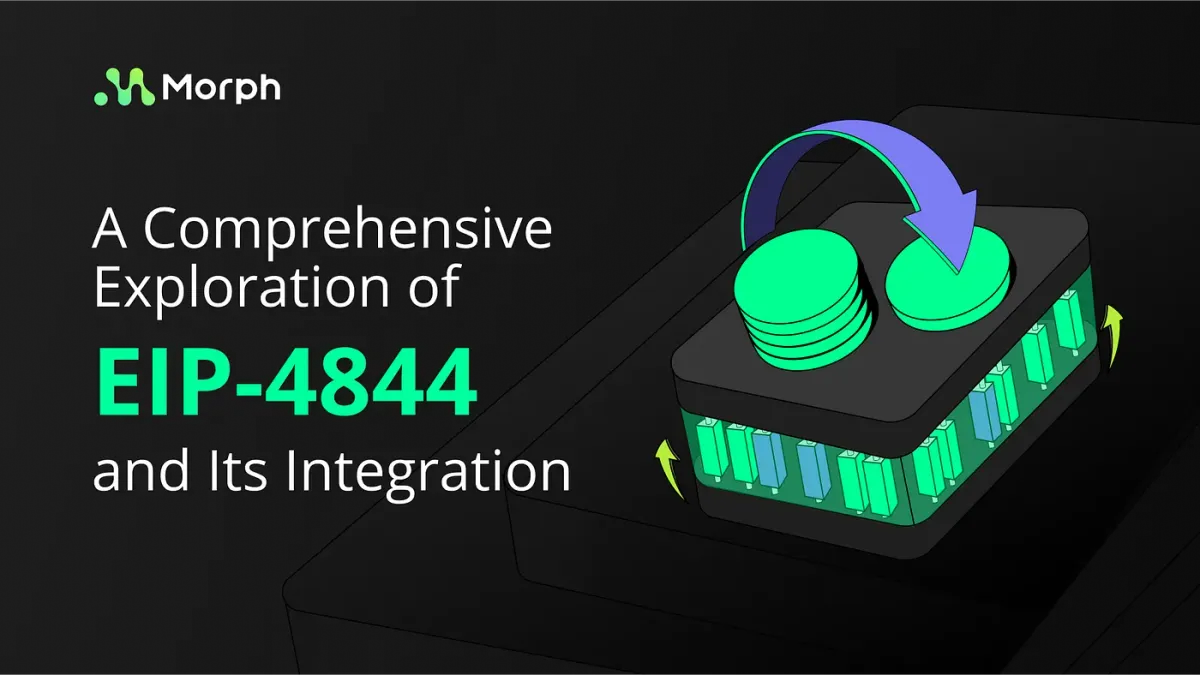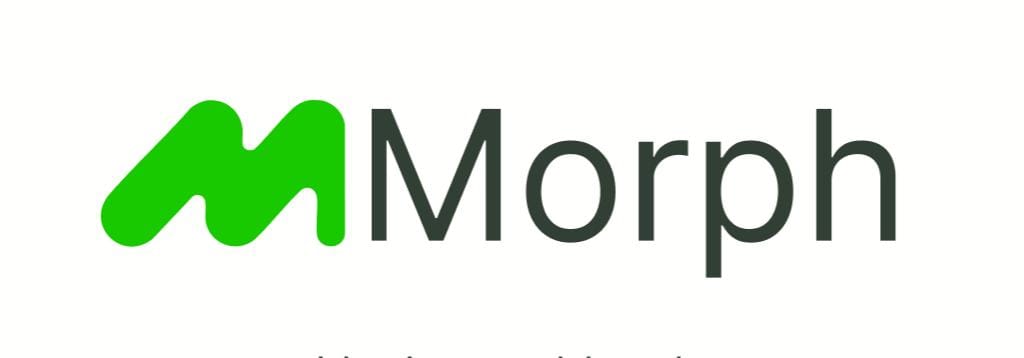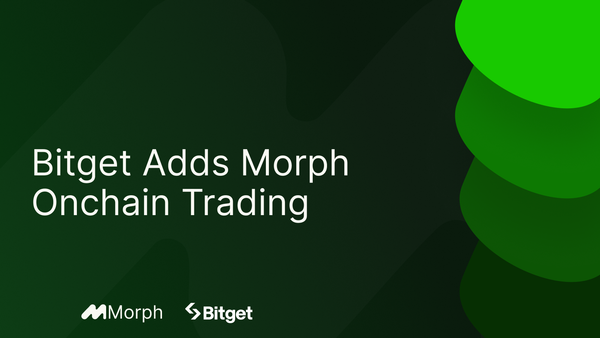A Comprehensive Exploration of EIP-4844 and Its Integration

As the Ethereum network anticipates its significant Dencun upgrade, set for March 13th, all eyes are on EIP-4844, a transformative component designed to significantly reduce the high costs of data availability for Layer 2 (L2) platforms. By introducing blob-carrying transactions that enable cheaper and temporary storage of large data sets, EIP-4844 aims to drastically lower transaction fees on L2 solutions.
This move not only enhances the efficiency and accessibility of Ethereum’s L2 networks but also marks a critical step towards achieving greater scalability through Proto-Danksharding. As we delve deeper, we’ll explore the technical innovations of EIP-4844, its anticipated impact on the Ethereum ecosystem, and how it positions its blockchain for a future of expanded utility and adoption.
What is EIP-4844?
EIP-4844, a cornerstone of the Ethereum Dencun upgrade, is set to introduce an innovative transaction model known as the blob-carrying transaction, marking a significant evolution in how Layer 2 (L2) platforms manage and store transaction data.
This proposal seeks to move away from the traditional calldata storage mechanism to a more scalable and cost-effective solution: “blobs.” The initiative underscores a forward-thinking approach to addressing the critical challenges of data availability costs that have long plagued L2 solutions, thus achieving a new era of scalability and accessibility within the Ethereum ecosystem.
Understanding Blob-Carrying Transactions
Blob-carrying transactions are designed to embed large volumes of transaction data in “blobs,” a method diverging from the conventional calldata approach. These blobs offer a cost-efficient way to store substantial data off-chain while maintaining references on-chain, significantly reducing the storage and processing burden on the Ethereum mainnet.
This mechanism directly addresses the high costs associated with data availability, ensuring that L2 platforms can offer cheaper, faster transactions without compromising on security or decentralization.
Technical Innovation and Gas Fee Reduction
The innovation behind blob-carrying transactions lies in their ability to efficiently manage data on the Ethereum network. By allowing large data sets to be stored in a compressed, temporary format, EIP-4844 reduces the amount of data that must be processed and stored on the Ethereum mainnet in real-time. This efficiency translates into lower gas fees for users and developers, as the cost of transmitting and storing data is significantly decreased. The introduction of blobs paves the way for higher transaction throughput and enhanced scalability, directly benefiting the Ethereum ecosystem’s capacity to support a wider range of applications and services.
Impact on Scalability and Data Throughput
After EIP-4844, it is expected that the transaction costs of Layer 2 solutions based on Ethereum will decrease by around 50%-90% for the L1 portion. In an ideal scenario, this number could potentially reach 99%.
Currently, the average cost of an ETH transfer on L2 is around $1, which means integrating 4844 into L2 could reduce user transaction costs to between $0.1 and $0.01. Of course, actual production data will vary based on different solutions, TPS on L2, Ethereum prices, Ethereum Gas Prices, and other related factors. We will be releasing our calculations soon, stay tuned.
The cost improvement means that developers are afforded greater flexibility and efficiency in building and deploying dApps. We anticipate the creation of more complex, data-intensive applications without the deterrent of prohibitive costs, thereby attracting a broader user base. For end-users, this means faster, cheaper transactions and a smoother, more responsive experience when interacting with Ethereum-based services.
Integration Process of EIP-4844 in Mainstream Rollups
Mainstream Rollups, such as Optimistic and ZK Rollups, are in the process of integrating EIP-4844 to harness its advantages. This integration is complex, involving updates at various levels of their infrastructure. For these Rollups, hard fork support is not just a technical necessity but evidence of the Ethereum community’s collaborative effort in evolving the network. Contract upgrades necessitated by EIP-4844 involve not only technical adjustments but also an extensive testing phase to ensure these new transaction types interact flawlessly with existing systems. Governance processes play a critical role in this integration, requiring consensus among developers, validators, and users to implement these changes effectively.
Specific Rollups and Their Progress
To provide a more comprehensive view, it’s essential to highlight specific L2 solutions and their progress in integrating EIP-4844. For instance, Optimism and Arbitrum, two of the leading Optimistic Rollups, have signaled their commitment to adopting EIP-4844, working closely with their communities to test and deploy the necessary updates. ZK Rollups, known for their efficient data handling and scalability features, are also at the forefront of adopting EIP-4844, with projects like zkSync and StarkWare actively exploring how to best leverage blob-carrying transactions to further reduce costs and improve performance.
Morph’s Unique Approach to EIP-4844 Integration
Morph stands out in its approach to integrating EIP-4844 due to its inherently flexible and modular architecture. This design philosophy allows Morph to swiftly adapt to changes and new standards like EIP-4844, facilitating a smoother and more efficient integration process. Unlike traditional Rollups, which may face significant technical and governance hurdles, Morph’s system is designed to easily accommodate such upgrades, reducing the time and effort required to realize the benefits of reduced DA costs and enhanced transaction efficiency. This agility not only underscores Morph’s technological innovation but also its strategic foresight in aligning with Ethereum’s long-term vision for scalability and efficiency.
Why Can’t L2 Solutions That Use External DA Integrate EIP-4844?
External DA layers offer an alternative to Ethereum’s native data availability mechanism by storing transaction data off-chain or on specialized chains designed for data availability, such as Celestia. While these solutions can provide scalability and efficiency, they operate independently of Ethereum’s core infrastructure. This independence means that upgrades like EIP-4844, which specifically target efficiency improvements within Ethereum’s DA layer, do not directly impact these external DA solutions. The disconnect arises because these L2s do not interact with Ethereum’s transaction layer (Ethereum L1) in the same way native L2s (Layer 2 solutions that use Ethereum as DA layer) do, thus missing out on the direct benefits of innovations like blob-carrying transactions.
The debate between utilizing Ethereum’s native DA layer versus external DA layers highlights a broader discussion on the modularity of blockchain solutions. Traditional L2 solutions, by employing Ethereum for both DA and settlement, exemplify a modular approach that distinguishes execution and settlement layers. EIP-4844 reinforces this modularity by making the use of Ethereum’s DA layer more attractive and cost-effective. As Ethereum continues to evolve with rollup-centric upgrades, L2 solutions utilizing its DA layer are well-placed to benefit from increased efficiency and reduced costs.
Navigating the DA Landscape
The emergence of external DA layers has been partly driven by venture capital interest and the pursuit of alternative scalability solutions. However, the decision to use Ethereum’s DA layer or an external one should be informed by the specific needs of the L2 solution, including considerations of security, integration, and cost. Morph’s strategy exemplifies a balanced approach, prioritizing security and efficiency by aligning closely with Ethereum’s infrastructure while remaining open to collaborating with external DA solutions for potential Layer 3 developments. This approach reflects a comprehensive understanding of the blockchain ecosystem’s complexities and the strategic considerations involved in navigating its evolving landscape.
Morph’s EIP-4844 Integration Progress
Morph’s integration of EIP-4844 represents another example of our commitment to staying at the forefront of blockchain technology and enhancing user experience.
By successfully completing the development phase and preparing for the upcoming Morph Holesky testnet launch, Morph will be the first to offer users an optimized experience with EIP-4844, seamlessly transitioning it to the upcoming mainnet.
Benefits for Morph Users
The introduction of blob-carrying transactions through EIP-4844 into Morph’s ecosystem promises substantial advantages for users. Key among these is the reduction in transaction costs, directly attributed to the more efficient data storage and processing capabilities provided by the new transaction model. Furthermore, the expected increase in TPS aligns with Morph’s objective to support consumer applications demanding high throughput and low transaction costs, reinforcing its commitment to delivering a superior blockchain experience.
Morph’s zkEVM 4844-Compatible Solution
Morph’s integration with EIP-4844 includes the following key points:
- Implementation of Ethereum-based data availability solutions compatible with EIP-4844.
- Implementation of Morph’s unique optimistic-zkEVM state verification solution compatible with EIP-4844.
- Implementation of aggregated ZK proof solutions compatible with EIP-4844.
This gives Morph an advantageous position over other Layer 2 solutions in terms of EIP-4844 compatibility, including:
- Cost advantages over solutions relying on external data availability mechanisms.
- Security advantages over OP Rollups that do not implement state verification solutions (such as fraud proofs).
- Cost advantages over ZK Rollups that do not implement aggregated ZK proof compatibility.
Morph’s proactive approach to integrating EIP-4844 exemplifies its ambition to rank among the top Layer 2 solutions, underpinned by a secure and technologically advanced stack. This strategic orientation not only delivers direct benefits to Morph users in terms of cost savings and performance enhancements but also solidifies Morph’s competitive position in the ever-evolving blockchain ecosystem.
We will soon publish a detailed technical article discussing the challenges of the EIP-4844 zkEVM integration, including aggregation-proof compatibility and the solutions we implemented. If you are interested, please keep a close eye on our Medium for updates.
Morph’s Future Outlook
As Morph strides confidently into the future, our trajectory is marked by a suite of features and an ambitious roadmap that seeks to solidify our leading position in the Layer 2 solutions space. The platform’s integration of EIP-4844 is just the beginning of a journey aimed at revolutionizing how transactions and data availability are managed within the Ethereum ecosystem.
Morph’s Advantages
Morph distinguishes itself with a suite of features that elevate its status within the blockchain landscape, driven by a dedication to innovation and consumer-centricity:
- Reduced Transaction Costs: The adoption of EIP-4844 significantly lowers transaction costs for Morph users, democratizing access to digital transactions and fostering wider adoption.
- Enhanced Transaction Throughput: Morph’s advancements ensure it can efficiently process a high volume of transactions, meeting the demands of applications requiring both speed and scalability.
- Security and Compatibility: By aligning with Ethereum’s rigorous security protocols and integrating a zkEVM compatible with EIP-4844, Morph guarantees a secure, seamless experience for its users.
- Technological Innovation: The platform’s pioneering efforts, particularly in compatibility between zkEVM’s aggregation proof and EIP-4844, underscore its commitment to optimizing blockchain technology’s flexibility and efficiency.
Roadmap and Plans
Looking to the future, Morph’s roadmap reflects an ambition to not only sustain its technological leadership but also to enrich its offerings and ecosystem:
- Mainnet Launch: Anticipated in Q3 the mainnet launch represents a pivotal development phase, aligning with the successful EIP-4844 implementation in the Holesky testnet. This step forward will unlock new avenues for users and developers, fully embracing the benefits of EIP-4844 integration.
- Ecosystem Expansion: Morph’s strategy includes cultivating partnerships and introducing new functionalities designed to captivate a diverse user base, thereby magnifying the platform’s utility and influence.
- Ongoing Technological Enhancements: Morph’s commitment to innovation is unyielding. We plan to continue introducing further optimizations that promise to reduce costs, elevate efficiency, and enrich user experiences, materializing a true consumer blockchain.
- Community and Governance Engagement: Recognizing the value of community involvement and decentralized governance, Morph is poised to launch initiatives that empower users to contribute to its evolution and governance, fostering a more inclusive and participatory development process.
As Morph advances confidently into the future, our commitment to providing a secure, efficient, and user-friendly platform that fully harnesses Ethereum’s Layer 2 capabilities remains unwavering. With a visionary outlook and a comprehensive roadmap, Morph is set to spearhead blockchain innovation, promoting the adoption of decentralized technologies and reshaping the landscape of digital transactions. Through strategic advancements and community-driven development, Morph is well-positioned to lead the charge in the next generation of consumer blockchain solutions.
About Morph
Morph is a consumer Layer-2 blockchain. Combining the best of OP and ZK rollups, it offers unmatched scalability and security, aiming to lay a foundation for an ecosystem of consumer-focused, value-driven DApps.
Through its hallmark features, such as a Decentralized Sequencer Network, Responsive Validity Proof (RVP) system, and modular design, the project delivers efficient and flexible scaling while preserving the initial security, availability, and compatibility of the Ethereum network.




